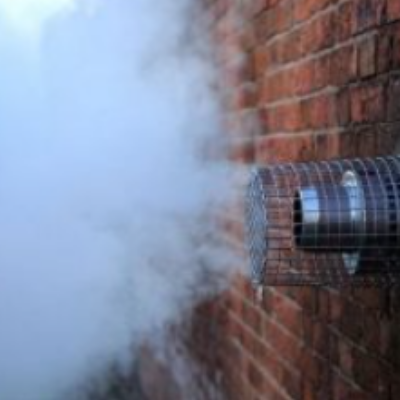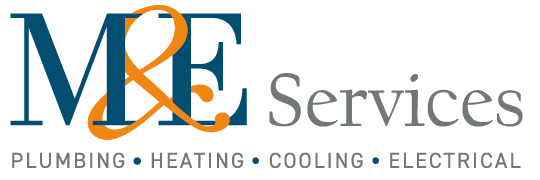How Do Condensing Boilers Work? What is Condensating?
What is a condensing boiler?
A condensing boiler is a form of gas boiler that can work at a higher efficiency. Non-condensing gas boilers could lose up to 40% of the heat they generated via the flue, whereas condensing boilers can recover most of that heat by capturing it before it leaves the flue and re-cycling it to pre-heat the boiler.
How does a condensing boiler work?
To understand how a condensing boiler works, and more importantly to explain why they are not condensing as they should in 99% of households, we first have to understand how a non-condensing boiler works.
All central heating systems work by sending hot water out into the radiators in one direction (called the flow) and receiving back after it has travelled around the radiators (called the return). A non-condensing heating system is set up to deliver heat to the radiators at 80°C. As the water ‘flows’ through the radiators about 20°C of heat is given off to the room. Water ‘returns’ to the boiler at 60°C.
Condensing boilers need to operate at lower temperatures to non-condensing boilers in order to recover the lost heat. The process is called condensing because the heat needs to turn back into water before it leaves the flue via the second heat exchanger. When the temperature of the water – as it returns to the boiler – is less than 54°C, the boiler will run in what is known as ‘condensing mode’. This is when the boiler starts to recovers its lost heat.
Even this is a sliding scale however. At 54°C the boiler is 87% efficient. The boiler does not reach 90%+ efficiencies until the return temperatures are around 45°C. This means water must exit the boiler at a maximum of 65°C, impart 20°C of heat to the room via the radiators, and return at 45°C. This makes radiator balancing very important to ensure enough heat is given off to the room to lower the return temperature sufficiently.
The problem is, most boilers are still set up to output at 80°C and return at 60°C. The boiler still works but it does not condense and it certainly does not reach 90%+ efficiencies.
Why A-rated condensing boilers are only B-E rated in the home
For more than a decade we have been urged to ‘upgrade’ to a high efficiency, condensing boiler to save money. A-rated boilers boast efficiencies of 92-94% ErP, however tests have shown that they massively underperform in the vast majority homes. As outlined above, condensing boilers have to be set up differently to old style boilers to achieve 90%+ efficiencies, but 99% of installers still set them up to run like an old-style boiler.
Why is this happening? A-rated condensing boilers became mandatory in 2005, but despite 20 million gas boiler sales no investment has been made to upskill the workforce to fit them correctly. Rather than up-skilling its workforce, the gas industry has instead moved towards fast-track, one-size-fits-all, online boiler sales that have de-skilled the process to try to push prices down.
This false economy however that costs consumers £1,000s in higher bills and premature boiler replacements. It is no surprise that we have one of the highest replacement boiler rates in Europe
Why are efficiencies lower in practice?
A 12-month study undertaken by the Energy Saving Trust of boilers in UK households found that A-rated condensing combi boilers were on average 83% efficient and heat only boilers 80.3% efficient. The report concluded that “the in situ performance of the boiler is significantly less than the rated SEDBUK seasonal efficiency”. There are many reasons for such a large discrepancy between actual efficiencies and stated efficiencies:
Boiler oversizing
A Carbon Trust study into boiler efficiency found that “a significant number of them [boilers] were found to be substantially over-sized for the properties in which they were fitted and this is believed to be common practice in the UK”.
The report when onto highlight market failures that encouraged oversizing when it identified that “the average peak heat load of UK houses is around 6kW, but the size ratings of new boilers typically range from 10kW to 30kW”. In other words, oversized boilers send the wrong messages to consumers and installers that the smallest in the range must be for the smallest home. The smallest in the range will actually heat the vast majority of UK homes.
As a nation we have grown so accustomed to larger boilers, particularly combi boilers which show outputs of 24-50kW, that we now push for bigger boilers, just in case. However oversized boilers are at risk of wasting gas from excessive energy dumps of heat that cause the boiler the come on and off repeatedly.
When boilers fire up, they automatically ramp up to 70% of their maximum output. For a 21kW boiler (common is most homes) this would be around 15kW. Given that only 6kW is needed on a very cold day, the boiler is always going to overheat the system. When the radiators cannot get rid of enough heat the return temperatures to the boiler are too high for it to condense.
The answer in the short term is to reduce the maximum output of the boiler down to meet the maximum heat requirement of the property (e.g. 6kW) so when the boiler fires during periods that need less than 6kW, it is only to 70% of 6kW.
This is done by the installers; however, it is probably not reduced enough. Moreover, the graduation towards bigger boilers means that the lowest minimum output of larger boilers can be between 8-12kW. This means they will always be too big for the heating systems they serve.
Basic and incompatible heating controls
Basic controls turn the boiler on when the room temperature drops below the thermostat temperature and switches it off when the room temperature is reached. These were used with non-condensing boilers. In reality the temperature of the room continues to rise even after the boiler has switched off because there is latent heat in the radiators that the thermostat cannot account for.
More sophisticated controls tell the boiler to reduce its output before the room temperature is met which means it meets the desired temperature exactly. These are known as load or weather compensation controls and save an extra 3-5% in gas when paired with a condensing boiler.
The Energy Saving Trust report observed that “No boilers are recorded as having load compensation”. In other words, all of the condensing boilers in the Energy Saving Trust study used basic on/off controls, which do not maximise the efficiencies of condensing boilers and would have been a significant factor in much lower average efficiencies of 83% and 80.3%.
Boiler Plus was introduced in 2018 and aimed to lift up the control standards for boilers. Load and weather compensation were included, but the regulations were significantly diluted by the inclusion of ‘smart’ on/off controls under the ‘automation and optimisation’ category.
As consumers we all believe that smart controls are smart because they are efficient. But if they do not speak the same language as the boiler – so that they can vary their output up and down – then they are really only an on/off control with some remote programming.
Balancing
Balancing ensures that 20 degrees of heat is imparted from the radiators to the room. The temperature of the radiator is measured on one side and then the other to check this is happening. If water departs the boiler at 65 degrees and returns at 45 degrees, this is a perfectly balanced system.
The problem is that systems do not stay balanced and radiators are often the wrong size. As soon as less than 20 degrees C is dissipated into the room the efficiencies drop.
Thermostatic radiator valves (TRVs) can add to our woes if the installer is not skilled at balancing the system. Standard TRVs will shut down as individual rooms meet their temperature, but there is a delay in the boiler reducing its output (made worse if the boiler has not been, or cannot be, ranged rated).
How can I tell if my boiler is condensing?
Unfortunately, your boiler cannot tell you how efficient it actually is. The only way to measure this at present is to fit thermostatic pipe clips to the flow and return to monitor the temperatures.
In the meantime you can look at the flue emissions. Contrary to popular belief, a sign that your boiler is condensing is an invisible discharge from the flue. A boiler is NOT condensing when white plumes are exiting the flue. This is a sign that the energy is not being recovered as the heat is lost to outside.

Best condensing boilers
The best boilers are those that spend as much time as possible in condensing mode, for this they need to be able to operate a low kW output, the lower the better.
How do I get a condensing boiler working at 90%+ efficiencies?
You need a high-tech boiler, a compatible modulation control and most important of all, an installer competent in condensing boiler technology. Finding a competent installer is a needle in a haystack as 99% of installers have not been trained to setup condensing boilers correctly.
We hope this article has been helpful and insightful.
Heat Pump Design, Installation & Servicing
Boiler Services
Boiler Services
Same day boiler servicingHeating Services
Heating Services
Same day heating servicesPlumbing Services
Plumbing Services
Same day plumbersElectrical Services
Electrical Services
Same day electriciantel
office
M&E Services (Lincs) Ltd t/a M&E Services, Red Lion Quarter, Red Lion Street, Spalding, PE11 1SX
registered office
M&E Services (Lincs) Ltd. 20-22 Wenlock Road, London, England, N1 7GU. Company No: 14666876. Registered in England and Wales.

